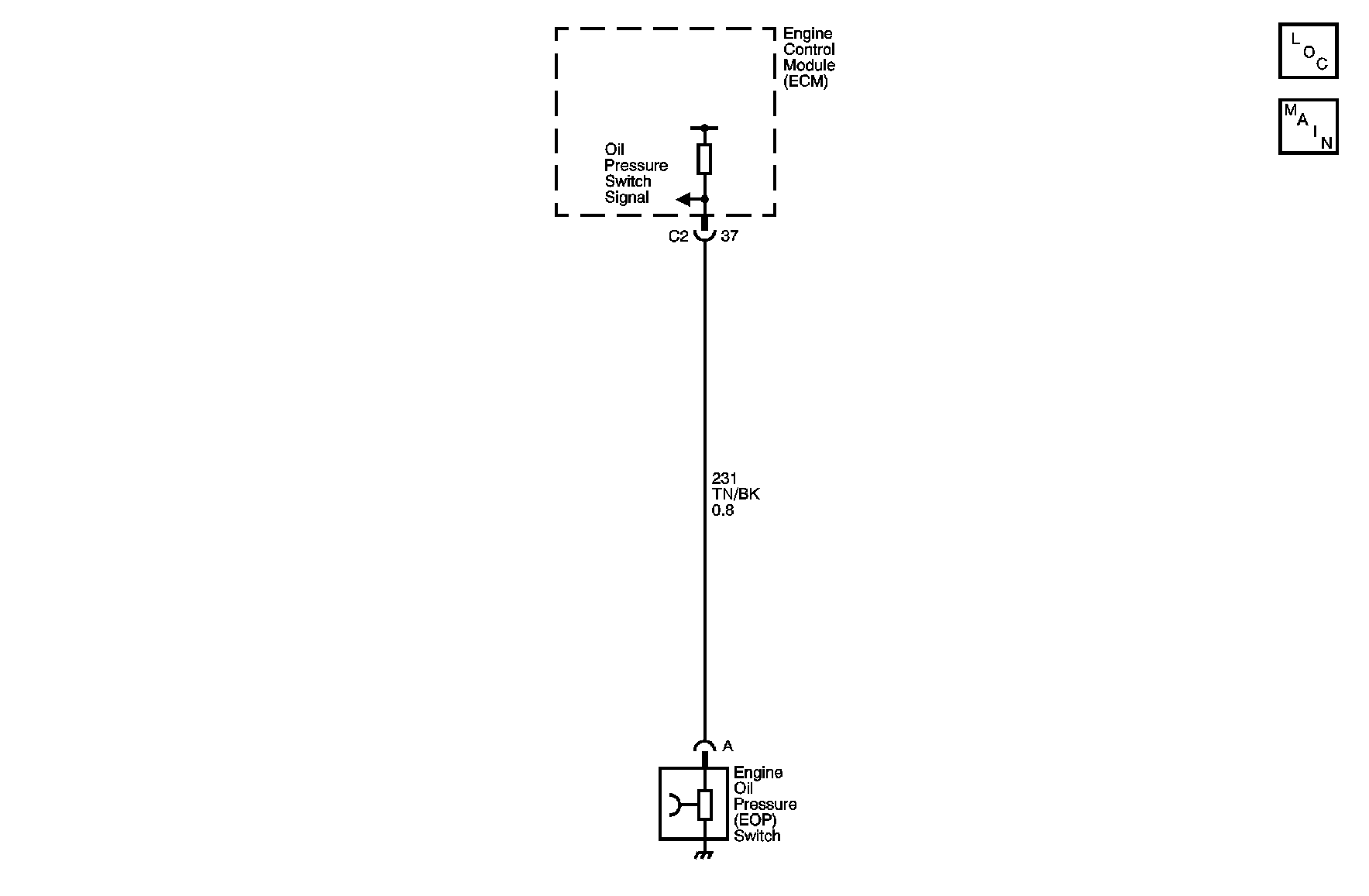
Circuit Description
When the oil pressure is above 4.5 psi, the oil pressure switch opens, and the engine control module (ECM)/powertrain control module (PCM) senses a high signal voltage. The ECM/PCM monitors the oil pressure switch signal circuit and sends a class 2 message to the instrument panel cluster (IPC) indicating the switch status. When the engine oil pressure (EOP) is low, the EOP switch closes, the signal circuit is low DTC P0520 sets.
Conditions for Running the DTC
The ignition is ON, with the engine ON.
Conditions for Setting the DTC
| • | The ECM/PCM detects that the EOP sensor signal circuit is pulled low. |
| • | The above condition is present for greater than 5 seconds. |
Action Taken When the DTC Sets
| • | The ECM/PCM records the operating conditions at the time the diagnostic test fails. The ECM/PCM displays this information in the Failure Records on the scan tool. |
| • | The IPC illuminates the engine oil pressure indicator. |
Conditions for Clearing the DTC
| • | The DTC becomes history when the conditions for setting the DTC are no longer present. |
| • | The history DTC clears after 40 malfunction free warm-up cycles. |
| • | The ECM/PCM receives a clear code command from the scan tool. |
Diagnostic Aids
| • | Using the Failure Records data may help locate an intermittent condition. If you cannot duplicate the DTC, the information in the Failure Records can help determine how many miles since the DTC set. The Fail Counter and Pass Counter can help determine how many ignition cycles that the diagnostic test reported a pass and/or a fail. |
| • | If the DTC is not current, it may be due to an intermittent condition. |
| • | Refer to Testing for Intermittent Conditions and Poor Connections in Wiring Systems. |
Step | Action | Yes | No |
|---|---|---|---|
Schematic Reference: Instrument Cluster Schematics | |||
1 | Did you perform the Diagnostic System Check - Instrument Cluster? | Go to Step 2 | |
2 |
Does the test light illuminate? | Go to Step 4 | Go to Step 3 |
3 | Test the signal circuit of the oil pressure switch for a short to ground. Refer to Circuit Testing and to Wiring Repairs in Wiring Systems. Did you find and correct the condition? | Go to Step 8 | Go to Step 5 |
4 | Inspect for poor connections at the harness connector of the EOP switch. Refer to Testing for Intermittent Conditions and Poor Connections and to Connector Repairs in Wiring Systems. Did you find and correct the condition? | Go to Step 8 | Go to Step 6 |
5 | Inspect for poor connections at the harness connector of the engine control module (ECM)/powertrain control module (PCM). Refer to Testing for Intermittent Conditions and Poor Connections and to Connector Repairs in Wiring Systems. Did you find and correct the condition? | Go to Step 8 | Go to Step 7 |
6 | Replace the EOP switch. Refer to Engine Oil Pressure Sensor and/or Switch Replacement in Engine Mechanical - 2.2L or to Engine Oil Pressure Sensor and/or Switch Replacement in Engine Mechanical - 2.0L (LSJ). Did you complete the replacement? | Go to Step 8 | -- |
7 |
Important: Program the replacement ECM/PCM. Replace the ECM/PCM. Refer to Engine Control Module Replacement in Engine Controls - 2.2L (L61) or to Powertrain Control Module Replacement in Engine Controls - 2.0L (LSJ). Did you complete the replacement? | Go to Step 8 | -- |
8 | Operate the system in order to verify the repair. Did you correct the condition? | System OK | Go to Step 2 |
